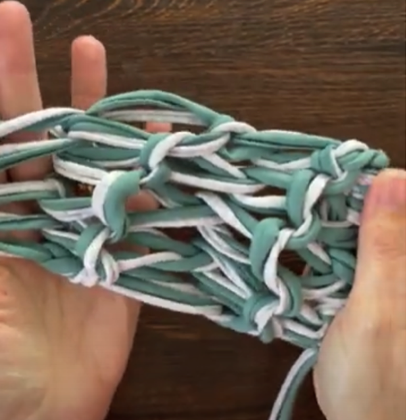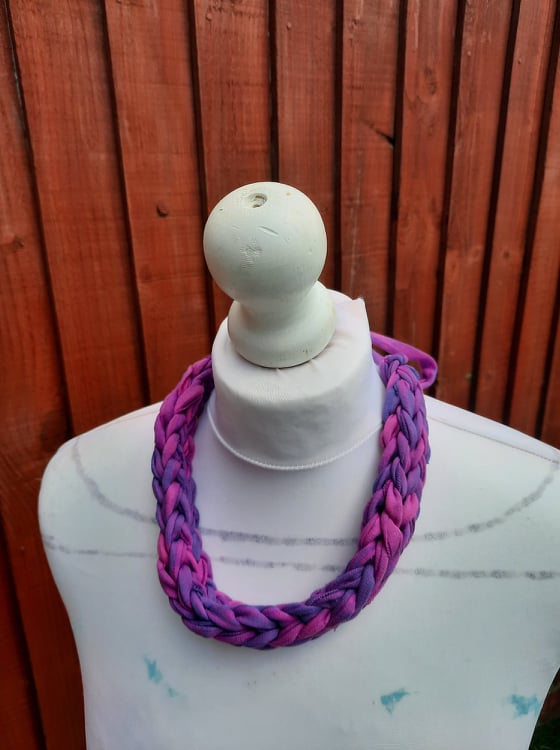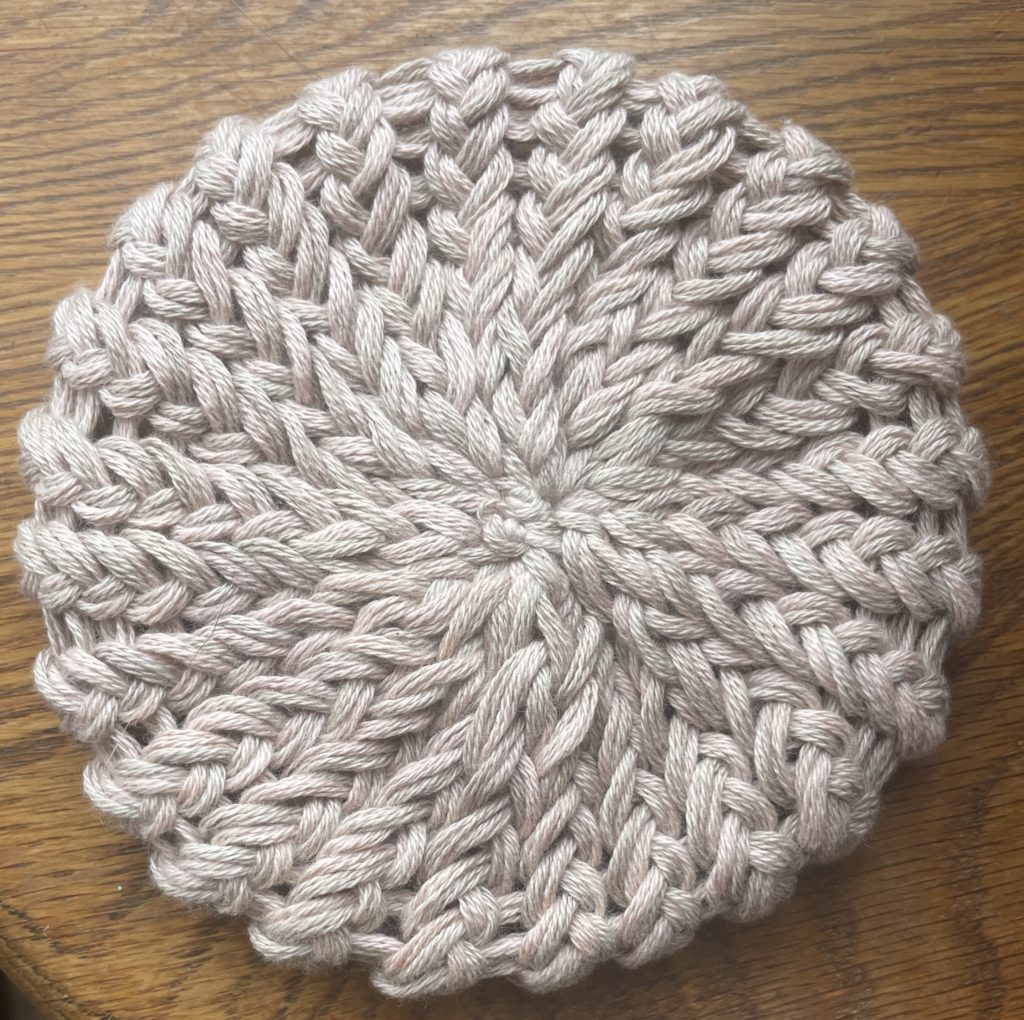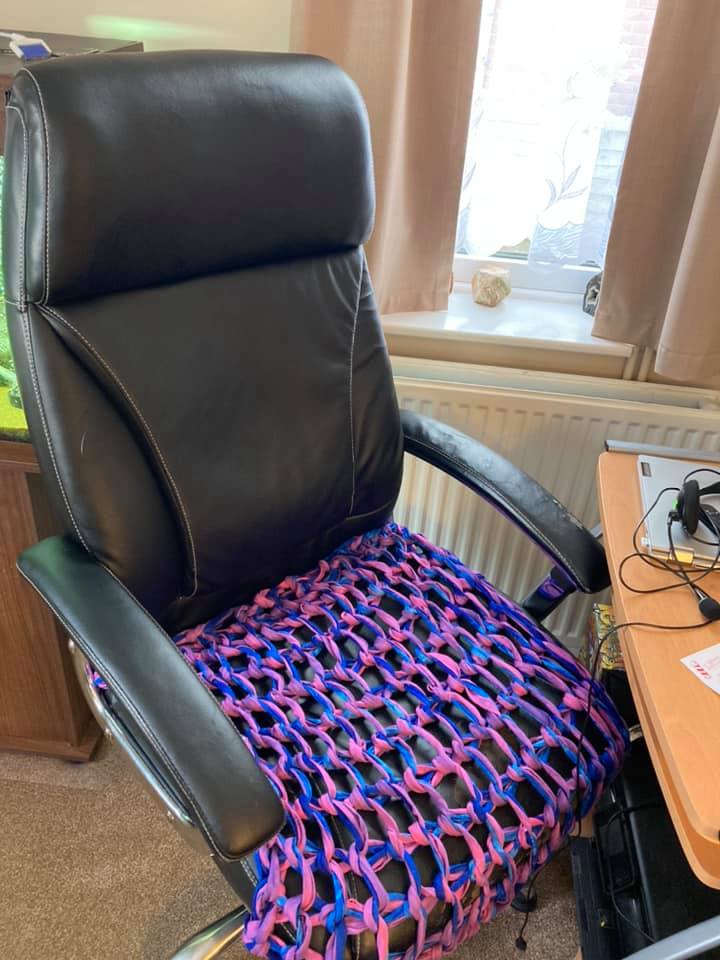Exploring the Divide: Knitting Without Needles vs. Traditional Knitting
In the world of crafting, knitting reigns supreme as a beloved pastime that has captured the hearts and imaginations of enthusiasts for generations. However, tucked within the realm of knitting, there is also knitting without needles.
In this blog post, we’ll delve into the key differences between these two approaches to knitting. We will explore why you might choose no needles knitting for your next creative endeavour.
As you all probably know by now, knitting without needles is my thing. Around 6 years ago, I picked up a Knitting Nancy from a charity shop. I used a Knitting Nancy when I was a child, and thought it might be fun to try it out again. After You Tubing techniques, I came across the other no needles knitting techniques which really spoke to me. It is hard to explain why.
I just had an immediate click with them. This may have been because the techniques and results are so very different to traditional knitting. Also, there are a lot more techniques to try out with no needles knitting.
Let’s delve a bit deeper shall we?
Tools of the Trade: Needles vs. No Needles
The most obvious distinction between traditional knitting and no needles knitting lies in the tools used to create fabric. Traditional knitting uses knitting needles which are used to manipulate yarn and create stitches in a sequential manner.

In contrast, no needles knitting techniques utilise alternative tools or even the knitter’s own hands or fingers to create projects. Techniques like arm knitting, finger knitting, and loom knitting eliminate the need for traditional needles altogether. This gives a simplified approach that may be more accessible to beginners or those with dexterity issues.
Is knitting without needles more difficult than traditional knitting?
I really didn’t get on with traditional knitting. The tension and I just didn’t get along. I used to drop stitches (a lot) and the work came out looking awful. So I stopped trying.
Then knitting without needles found its way into my life. Yes there are some similarities. For example they both have stitches such as knit, purl and cable, but are created in a different way.
No needles knitting techniques tend to be more straightforward and beginner friendly.
I found them much easier to learn. I know it takes time to learn anything new, but these techniques came to me much more easily.
These techniques such as arm knitting and finger knitting offer a quicker path to creating finished projects. I think they are perfect for many types of people, for example –
- Beginners
- Kids who want to try something new
- People who want to have a more mindful hobby.

This accessibility makes them ideal for beginners or those looking for a relaxing and enjoyable crafting experience.
The intricate nature of traditional knitting projects, such as intricate lace shawls or complex cable sweaters, may appeal to experienced knitters looking for a challenge.
Knitting without needles and speed
One of the advantages of no needles knitting techniques is their potential for speed and efficiency. Arm knitting for example allows you to complete projects much more quickly. You can make projects much more quickly because of the scale of the stitches. This then results in you finishing your items in less time.
This increased speed and efficiency may be appealing to knitters who are short on time or who prefer to see results quickly.
Types of projects
You can use both traditional knitting and no needles knitting to create a wide range of projects, including garments, accessories, and home decor items. However, the techniques used in each approach may lend themselves better to certain types of projects.
Traditional knitting
Traditional knitting is well suited to projects that require fine detail work and intricate stitch patterns, such as –
- Lace shawls
- Cable sweaters
- Fair isle designs.
The precision of knitting needles allows for greater control over stitch placement and tension. This precision makes it ideal for creating delicate or complex designs. These projects can be shaped much more easily as they are more intricate and smaller stitches are used.
No needles knitting techniques
In contrast, no needles knitting techniques are often used for projects that require larger-scale construction or simple, repetitive stitch patterns. Techniques like arm knitting and loom knitting are popular choices for creating projects such as –
- Cozy blankets
- Chunky scarves
- Oversized accessories.
Home decor projects are also good choices to use knitting without needles techniques as they are bigger and easy to work up. I recently made a mug coaster on a round knitting loom using my favourite organic cotton yarn and it came out so well.

The larger scale of these projects and the absence of needles make them quick and easy to work up, perfect for beginners or knitters looking for a more relaxed crafting experience.
Knitting without needles – versatile and accessible
No needles knitting techniques offer a level of versatility and accessibility that traditional knitting may not always provide.
For example. techniques like arm knitting and finger knitting require little more than yarn and a free hand, making them accessible to a wide range of individuals, including children, seniors, and those with physical limitations.
Precision projects or more fluid ones?
With traditional knitting, it allows the knitter to create more detailed patterns and intricate designs. The fine pointed tips of the needles enable precise movements and manipulation of the yarn, resulting in clean and (mostly) even stitches. This level of precision is particularly important when working on projects that require specific gauge or when working with delicate yarns.
If you want to take on a project that is bigger, looks more quirky, and allows the odd looser stitch, knitting without needles may be better for you.
Types of yarn
Another factor to consider when choosing between traditional knitting and no needles knitting techniques is the types of yarn that can be used. Traditional knitting needles accommodate a wide range of yarn weights and fibre compositions, from delicate lace yarns to bulky wool blends. I did try using some giant knitting needles but I still had the same problem with the tension, and then another problem in that they were so bulky I was knocking things as I knitted with them!
So some no needles knitting techniques may be better suited to specific types and weights of yarn. For example, arm knitting and finger knitting often require super bulky or jumbo weight yarns to achieve the desired thickness and drape. Similarly, loom knitting may work best with thinner yarns.
T shirt yarn is another of my favourite yarns as it is –

My final thoughts
Traditional knitting and no needles knitting each have their own unique appeal and techniques. The choice really boils down to personal preference, learning desire and the crafting experience you want.
Both methods have their place. But for me, because I struggled with traditional knitting, I turned to knitting without needles and have never looked back.
You could have both. The intricate artistry of traditional knitting and the simplicity and accessibility of no needles techniques. It all depends on what you want from your crafting. I want a craft that offers me self care, tranquility, and stress free crafting. Knitting without needles offers me this, for creativity, self-expression, and joy in my world of crafting.
